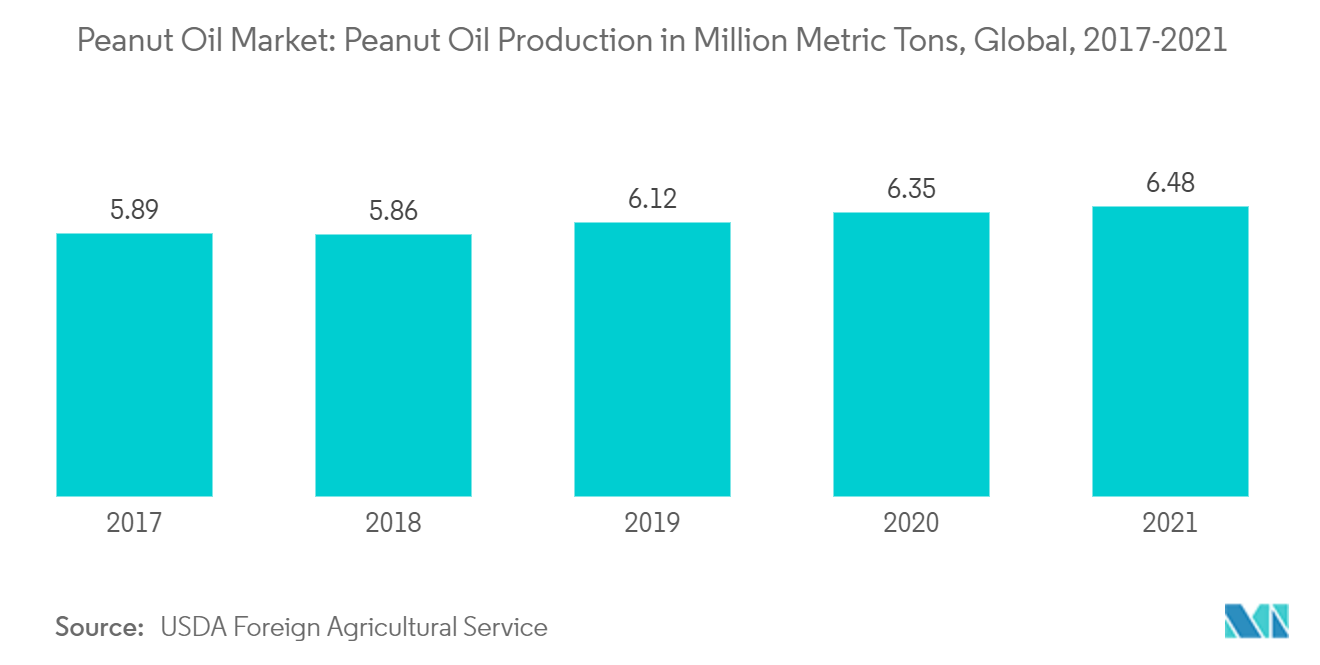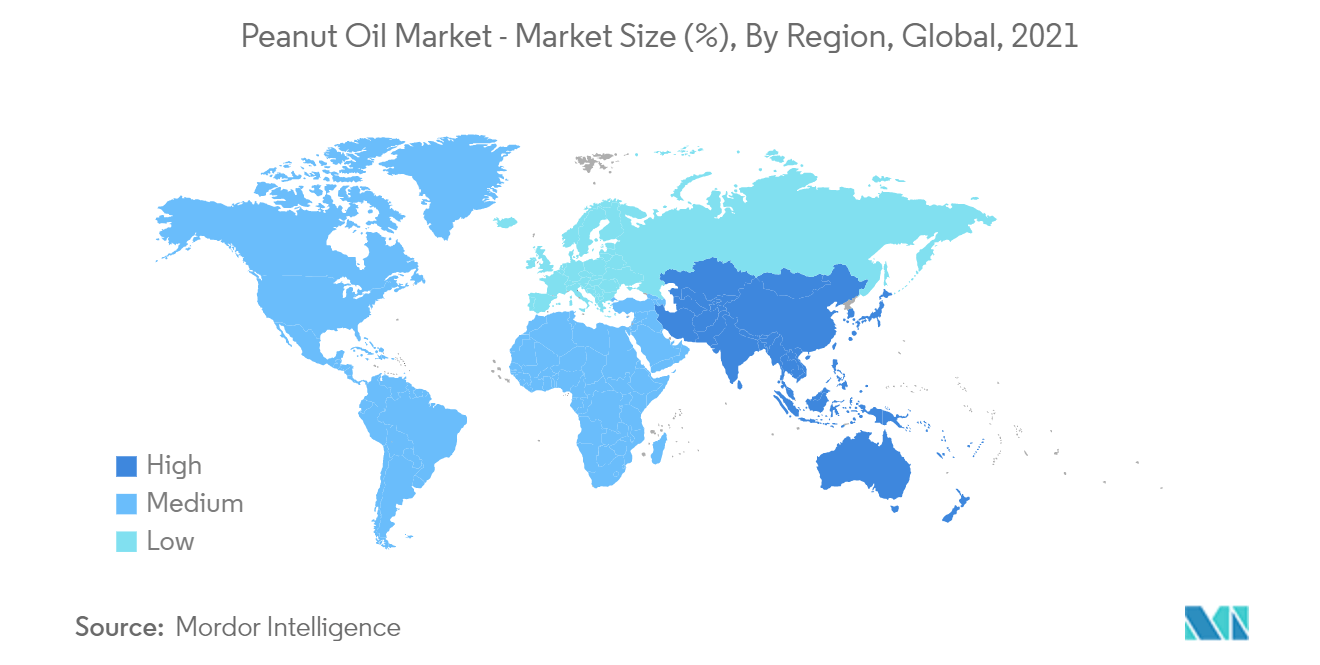Market Trends of Peanut Oil Industry
This section covers the major market trends shaping the Peanut Oil Market according to our research experts:
Increasing Awareness of Peanut Oil Benefits in Skincare Products
- With the growing culture of modernization, consumers' lifestyles are also changing daily. Consumers are trending toward the usage of natural products in their daily life. Moreover, with the development of science and technologies, consumers are also acknowledging the benefits of organic ingredient-based skin care cosmetic products, resulting in a rising demand for these natural ingredients such as peanut oil.
- For instance, consumers prefer peanut oil-based skincare products because they can help relieve skin of minor irritations while reducing redness. Eventually, the antioxidant powers found in its vitamin E content help fight aging.
- As a rich emollient, peanut oil helps condition and moisturize skin that looks and feels softer, smoother, and more radiant. Hydrogenated peanut oil also acts as a viscosity-increasing agent, which makes it an important part of the skincare industry. Due to its high-fat content, peanut oil is a great foundation for massage oils.
- Several cosmetic producers use fortified peanut oil as an emollient in skincare and hair care products. Cosmetic producers employ flavor-infused plant-based oils that retain their nutrients to create appealing soaps, serums, and other products. For instance, the cosmetics and pharmaceutical industries can use the peanut oil that Henry Lamotte Oils GmbH offers.
- Therefore, with the growing demand for peanut oil-based products in daily life, consumers are trending toward the peanut oil market, which is also driving the market significantly.

Asia-Pacific Holds the Largest Market Share
- Asia-Pacific is the largest market for peanut oil. Countries such as China and India contribute a large share of peanut oil consumption globally. According to the Department of Agriculture of the United States, the consumption of peanut oil in India was 1,170 thousand metric tons in the fiscal year 2021, whereas, in China, the consumption was around 3.28 million metric tons in the same fiscal year.
- Further, peanut oil is mainly used for cooking in Asian countries because it provides a different color and neutral taste and imparts a pleasant aroma to the cuisines served. It helps to multiply the taste of the food served.
- According to the peanut institute, refined peanut oil has a unique quality that makes it ideal for deep frying. In addition to its excellent flavor because it can reach a high temperature that maintains the exterior of food as crispy and the interior as extremely moist, refined peanut oil is also one of the most widely used deep-frying oils in the world.
- Both types of peanut oil have been used for all kinds of cooking, but many restaurants have long preferred refined peanut oil for frying due to its adaptability and stable flavor per the same organization.
- As peanut oil is high in heart-healthy monounsaturated fat, it can also help lower consumers' low-density lipoprotein (LDL), also known as bad cholesterol. Due to its various health benefits, consumers in this region prefer peanut oil in their daily routines, enabling the Asia-Pacific region to maintain dominance over other regions worldwide.
- Additionally, a controlled human study at Penn State University examined the effects of high oleic peanut oil on blood lipids and cardiovascular health and discovered that both total and "bad" LDL cholesterol levels were dramatically reduced.

